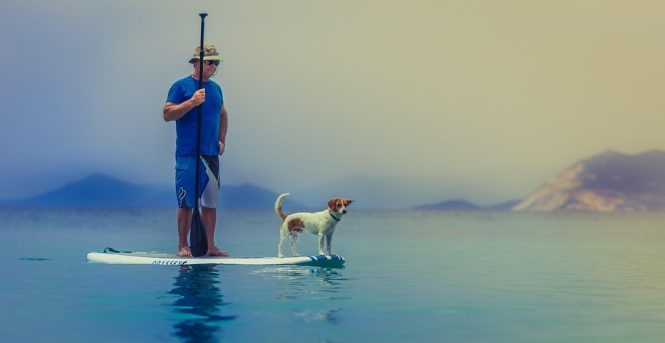
Stand-Up Paddleboarding Basics: Finding Your Balance on Water
Stand-up paddleboarding (SUP) has become a popular water sport in recent years, and it! easy to see why. It’s a great way to explore lakes, rivers, and oceans while getting a fantastic core workout. But, like any new activity, it can be intimidating to get started. In this article, we’ll cover the basics of stand-up paddleboarding and provide tips on how to find your balance on the water.
What is Stand-Up Paddleboarding?
Stand-up paddleboarding is a water sport that involves standing on a large, stable board and using a long paddle to propel yourself through the water. The board is typically between 10 and 14 feet long and 30-40 inches wide, providing a stable platform for standing. The paddle is used to stroke the water and generate power, while also helping to steer and stabilize the board.
Equipment Needed
Before you start, you’ll need a few pieces of essential equipment:
- Stand-up paddleboard (SUP): This is the board you’ll be standing on. You can choose from inflatable or hard boards, with various lengths and widths available.
- Paddle: The paddle is used to propel and steer the board. It’s typically made of lightweight materials, such as aluminum or carbon fiber.
- Personal Flotation Device (PFD): A PFD, also known as a life jacket, is an essential safety item. Make sure it’s Coast Guard-approved and fits properly.
- Leash: A leash keeps your board attached to your ankle, preventing it from getting lost if you fall off.
Basic Techniques
Here are the basic techniques you’ll need to get started with stand-up paddleboarding:
- Foot position: Stand on the board with your feet shoulder-width apart, toes facing slightly outward.
- Knee bend: Keep your knees slightly bent to lower your center of gravity and improve balance.
- Paddle stance: Hold the paddle with both hands, one on either side of the blade.
- Stroke: The stroke involves dipping the paddle into the water and pulling it back towards you. Aim for a smooth, consistent stroke.
- Turning: To turn, shift your weight onto one foot and use the paddle to steer the board.
Finding Your Balance
Finding your balance on the water is key to enjoying stand-up paddleboarding. Here are some tips to help you improve your balance:
- Start on your knees: If you’re new to SUP, start on your knees and paddle around to get a feel for the board and the water.
- Keep your weight centered: Keep your weight centered over the board, with your knees bent and your back straight.
- Look where you want to go: Keep your eyes focused on the horizon or a point in front of you, rather than looking down at the water.
- Use your paddle for stability: Use your paddle to help stabilize the board, especially in windy or choppy conditions.
- Practice, practice, practice: The more you paddle, the more comfortable you’ll become with your balance and the board.
Safety Tips
Remember to always follow these safety tips when stand-up paddleboarding:
- Wear a PFD: Always wear a Coast Guard-approved PFD while paddleboarding.
- Check the weather: Check the weather forecast and be aware of any changing conditions, such as wind or thunderstorms.
- Stay hydrated: Bring water and snacks with you on your paddle to stay hydrated and energized.
- Respect the environment: Be mindful of your surroundings and respect the environment and other water users.
Conclusion
Stand-up paddleboarding is a fun and rewarding water sport that’s accessible to everyone. By following the basics outlined in this article, you’ll be well on your way to finding your balance on the water and enjoying the many benefits of SUP. Remember to always prioritize safety, practice regularly, and respect the environment. Happy paddling!